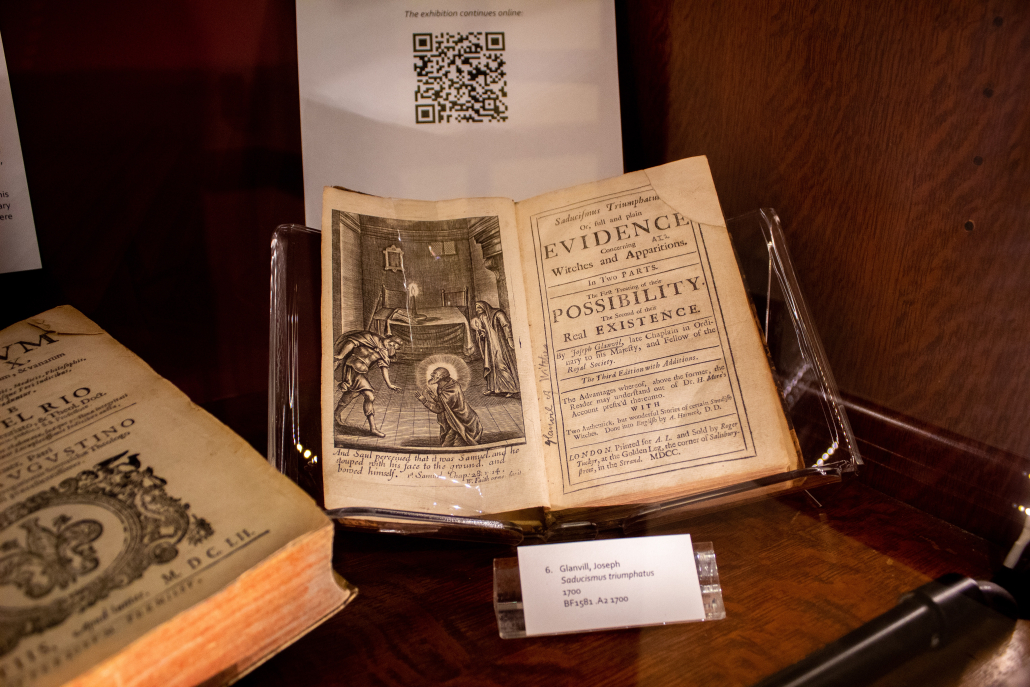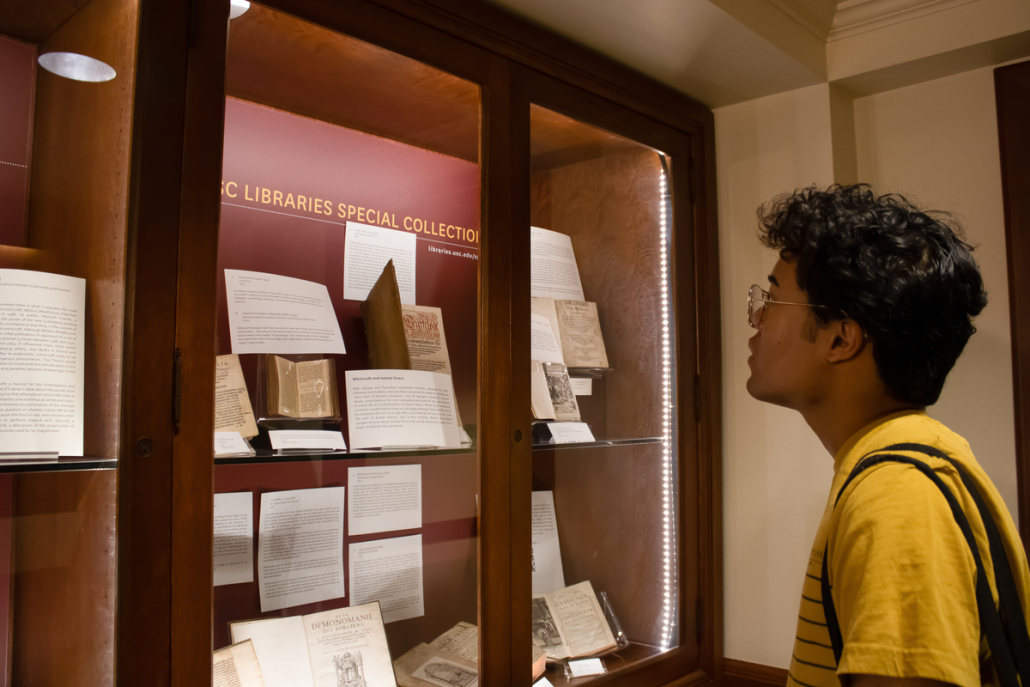Misogyny of Witchcraft exhibit opens at Doheny Memorial Library

Just in time for spooky season, a new exhibit at Doheny Memorial Library displays the gory history of the witchcraft trials.
Fear of witchcraft led to the persecution and execution of around 50,000 people by the late 16th cCentury. Books that sought to undermine the position of women in society veiled their intentions through criticisms of witchcraft, which came to be associated with untamed female deviance and mental illness.
These real life artifacts from the era of witch hunts can be found at the exhibit, titled “The Misogyny of Witchcraft,” located at the 2nd floor of Doheny in the Special Collections area.
The exhibit showcases a timeline of the paranoia toward witchcraft spanning from the medieval era to the 17th century.
The digital version of the exhibit on the USC Libraries website also ventures into the 18th century and includes more photos of the different artifacts and a bibliography for further reading.
Sue Luftschein, the head of Special Collections at Doheny Library, has worked on the exhibit for about three months. The more books Luftschein researched, the more she realized the era of persecuting women of witchcraft was where she wanted to focus the exhibit.
“The treatment of women in the early modern period was incredibly misogynistic, so that really sort of framed the whole thing,” Luftschein said.
The exhibit displays books that have been around for centuries, yet still remain in well-kept condition.
“It’s amazing to work with [these old artifacts]. You know, this is the kind of stuff that I didn’t realize was still around when I was a kid growing up,” said Special Collections Library supervisor Gabriel Contreras.
Each piece of text delves into the author’s evaluation and beliefs pertaining to the fear of witches. “The Malleus Maleficarum,” written by Heinrich Kramer, served as a manual for investigating and prosecuting witches. Exhibit attendees will be able to see a copy of the book printed in 1519.
The exhibit explores the misogynistic views of medieval to late 17th century writers, including Lavater and Trithemius, who theorized that women, who they believed to be the weaker sex and permitting of sin, were the predominant practitioners of withcraft.
“[The exhibit] speaks to a pretty terrifying episode in women’s history, as well as Western European history and religious history,” Luftschein said. “We can always certainly learn from the lessons of the past, hopefully.”
Contreras said he feels it’s important for men to visit this exhibit to learn about the misogyny that plagued the past and also reflects the society that we live in today.
“It’s important, especially as a man, we need to learn about misogyny. We grew up in a very sexist society. Undoing machismo is something that’s important,” Contreras said.
Luftschein conceptualized the exhibit while brainstorming ideas for this year’s Halloween-themed display.

The original idea for the exhibit was to display books about tarot and fortune teller cards, until Luftschein noticed that USC had a lot of ancient books on witchcraft.
“I started looking at other related materials and saw that we have a lot of books actually on witchcraft and as I started to do more and more research, I realized that this is really where I wanted to focus the exhibit,” Luftschein said.
Luftschein researched the impact of the authors and found books with depictive illustrations to present to exhibit attendees.
The library acquired the artifacts on display from a variety of different sources: some were originally purchased by the first director of the School of Philosophy back in the 1920s and ’30s, while others were acquired from donations and other purchases over the years that Luftschein scoured through to bring the exhibit to life.
“I went down a lot of rabbit holes doing the research for this exhibit,” Luftschein said.
Martin Yoon, a freshman majoring in international relations, visited the exhibit this past week and said he had a “surreal” experience.
“Those books have been used as propaganda in a sense and this has existed not that long ago — only a few 100 years ago,” Yoon said.
Yoon’s first introduction to the witch hunts was through reading Arthur Miller’s “The Crucible” in high school, but now, he said, seeing physical anti-witchcraft books made that point in history more real for him.
The anxiety surrounding the presumed witches of the 13th to 17th centuries, Yoon said, can be seen as a parallel for the worries some people have today about encountering new ways of thinking — a mindset that, he said, leads to bigotry and exclusion.
“There’s moments of panic and fear that we have, especially when we don’t know someone really well,” Yoon said. “[That kind of panic and fear] is applicable to many of the issues that we have today.”

